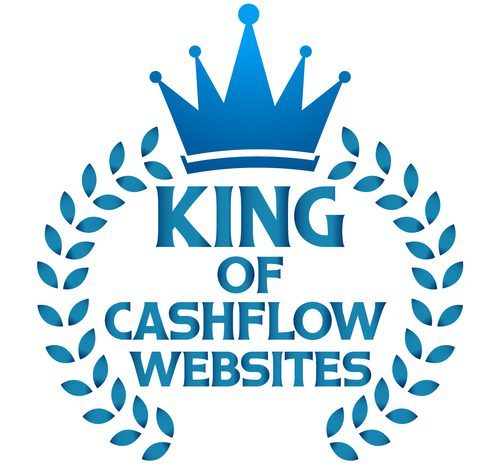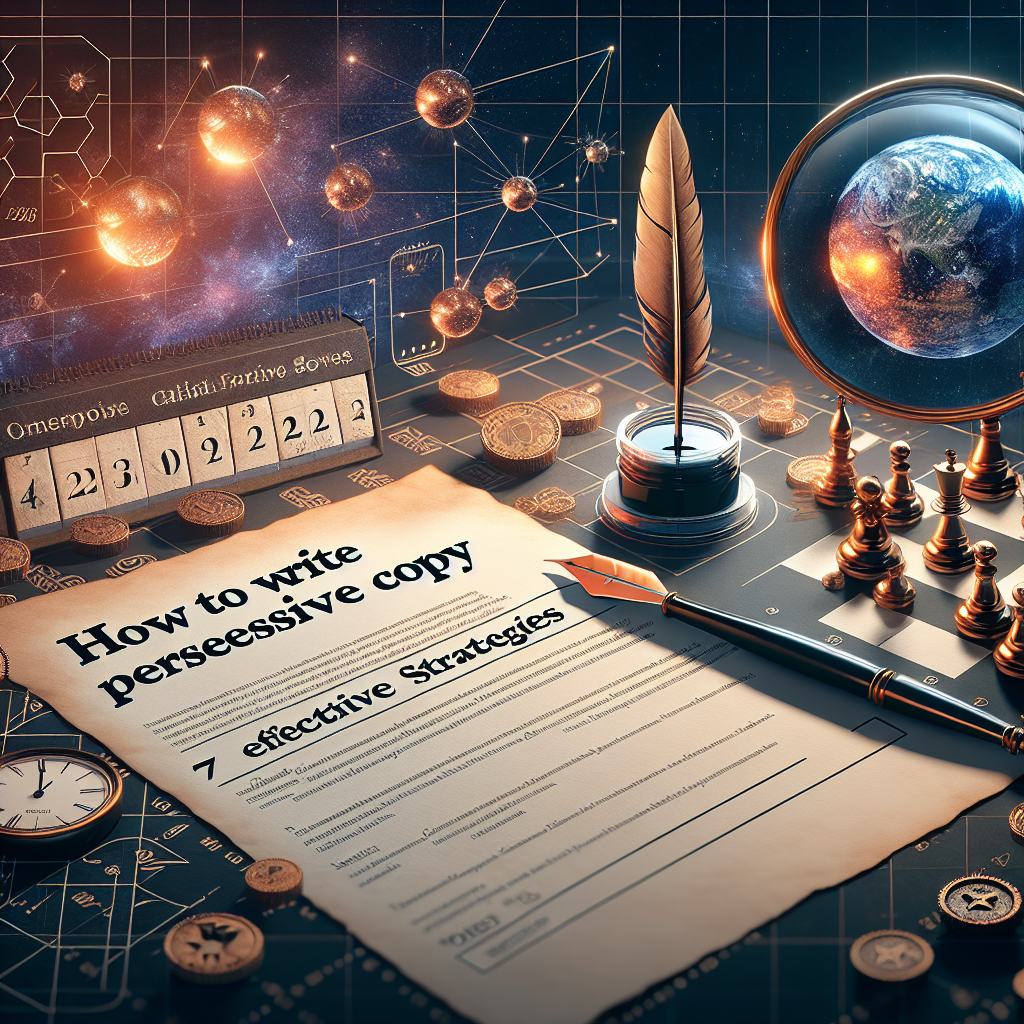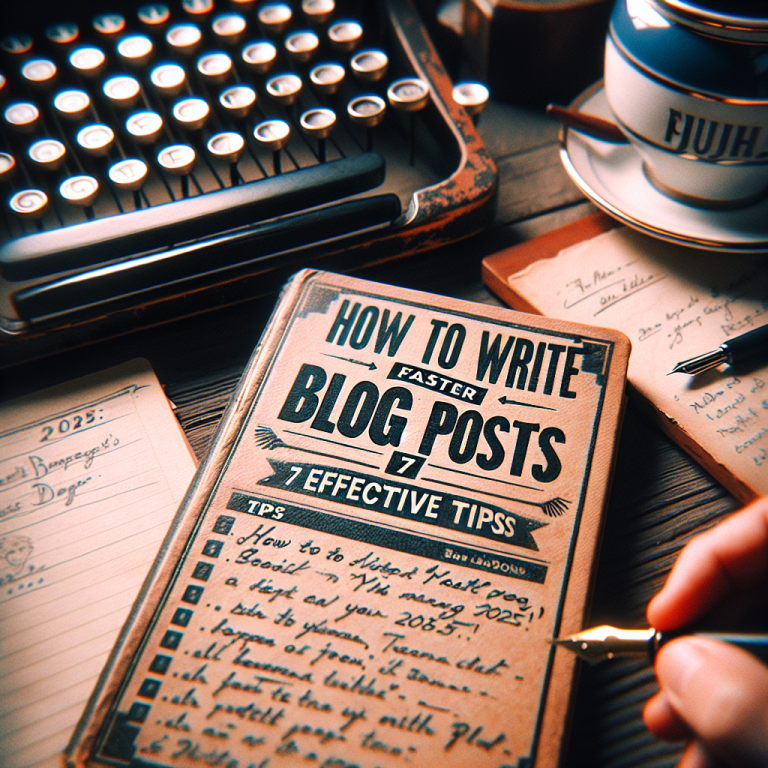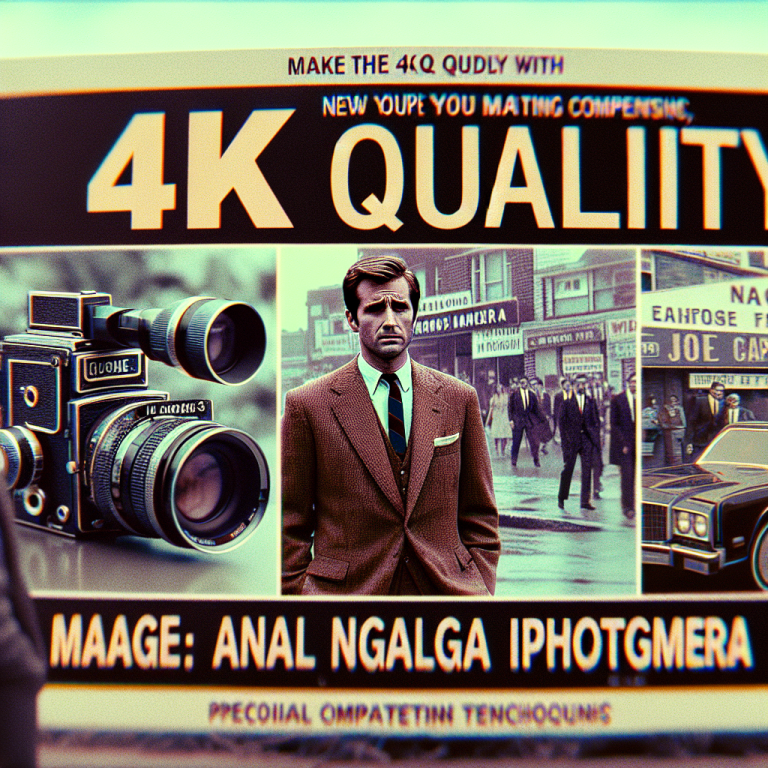How to Write Persuasive Copy: 7 Effective Strategies for 2025
Learning how to write persuasive copy is essential for anyone looking to motivate an audience, boost conversions, or grow their brand. In 2025, the art of persuasion has evolved with new digital tools, data-driven insights, and changing consumer behaviors. Whether you’re crafting emails, landing pages, or social media posts, mastering persuasive writing techniques can significantly impact your results. In this article, Iâll share seven effective strategies that will help you write compelling copy that resonates with your audience and moves them to action.
1. Know Your Audience Inside Out
Deepen Your Audience Understanding
Understanding your audience is the cornerstone of persuasive copywriting. In 2025, data analytics tools provide marketers with detailed insights into customer preferences, behaviors, and pain points. By analyzing this data, you can tailor your message to answer the specific questions and concerns your audience has. This allows you to craft copy that genuinely resonates, increasing the likelihood of engagement.
Start by creating detailed customer personas that include demographics, interests, challenges, and goals. The more specific your personas, the better you’ll be able to address their needs directly. Use surveys, social media insights, and website analytics to gather this information. Remember, the goal is to speak directly to your audience’s mind and emotions.
Research not only helps in understanding your audience but also guides the tone and style of your copy. Whether you adopt a friendly, professional, or playful voice, aligning with your audienceâs expectations makes your message more persuasive.
Why Knowing Your Audience Matters
Understanding your audience allows you to create highly targeted and effective copy. When your message aligns with their needs, it builds trust and credibility. According to recent marketing studies, personalized content is 80% more likely to generate conversions in 2025.
Additionally, know-how about your audienceâs pain points helps you position your product or service as the solution theyâve been searching for. This trust-based approach fuels their motivation to act, whether it’s making a purchase, signing up for a newsletter, or sharing your content.
To enhance your understanding, consider leveraging AI-powered tools that analyze customer data for trends and predictionsâmaking your strategies smarter and more persuasive.
2. Use Powerful Headlines That Capture Attention
How to Create Headlines That Demand Clicks
The headline is your first impressionâit must grab attention instantly. In 2025, headlines incorporate emotional triggers and curiosity elements to outperform traditional ones. Use numbers, powerful adjectives, or questions to spark interest. For example, “Transform Your Business in 7 Simple Steps” or “Are You Making These Common Mistakes?”
Test different headline structures using A/B split testing to identify what resonates most with your audience. Remember, clarity and specificity often outperform vague promises, so be clear about what value youâre offering.
Additionally, consider including your primary keywordâlike how to write persuasive copyâin your headline to improve SEO and attract targeted traffic from search engines. This fusion of compelling language and keyword optimization increases your visibility and engagement.
Practical Tips for Effective Headlines
- Keep headlines conciseâideally under 70 characters.
- Use power words that evoke emotion such as “exclusive,” “proven,” or “ultimate.”
- Include a clear benefit or promise to set expectations.
By crafting headlines that combine emotional appeal and SEO best practices, you’ll significantly boost your click-through rates and persuade more readers to engage with your content.
3. Emphasize Clear Benefits Over Features
Why Benefits Drive Action
People donât buy products or services; they buy the benefits these offerings provide. When you learn how to write persuasive copy, shifting focus from features to benefits is critical. For example, instead of saying, “Our software has 10 features,” say, “Save hours each week with our automated workflow.”
This method makes your messaging more relatable and emotional. Highlight how your product can solve problems, improve lives, or fulfill desires. The emotional component is often the deciding factor in conversions.
Research confirms that benefit-driven copy is 50% more effective at persuading consumers in 2025. Use storytelling and real-world examples to illustrate these benefits vividly.
Enhancing Benefits with Visuals and Stories
Complement your benefits with visualsâimages, infographics, or videosâto create a compelling narrative. For instance, show before-and-after scenarios or customer success stories to humanize your message. Stories evoke emotions that drive decision-making, making your copy more powerful.
Include testimonials and case studies that demonstrate tangible results. When prospects see evidence that others have benefited, it significantly boosts their confidence in taking action. Remember, persuasive copy in 2025 is as much about storytelling as it is about information.
4. Leverage Social Proof and Testimonials
Why Social Proof is Persuasive
In 2025, consumers are more skeptical than ever, making social proof a crucial element of persuasive copy. Showcasing reviews, testimonials, user counts, or expert endorsements reduces hesitation and builds credibility. According to recent studies, 92% of consumers read online reviews before making a purchase.
Integrate authentic testimonials that address common objections and highlight specific benefits. The more relatable and detailed these are, the more they influence potential buyers.
Additionally, display badges or logos of trusted partners, awards, or media mentions to reinforce your authority and reliability.
Gathering Effective Social Proof
To maximize the impact of social proof, actively request feedback from satisfied customers. Provide easy channels for reviews and ensure they are genuine. Video testimonials tend to be more persuasive because they add authenticity.
Consider incorporating user-generated content and case studies into your persuasive copy. These elements humanize your brand and demonstrate real-world results, making your message more convincing.
5. Create a Sense of Urgency and Scarcity
How Urgency Accelerates Decision-Making
FOMOâfear of missing outâis a powerful motivator. Use time-limited offers, limited stock messages, or exclusive deals to create urgency. In 2025, dynamic countdown timers and real-time updates make scarcity tangible and prompt immediate action.
Phrase your call-to-action (CTA) with urgency, such as “Buy Now,” “Limited Spots Available,” or “Offer Ends Tonight.” This encourages prospects to act before it’s too late.
However, ensure your urgency feels genuine to avoid skepticism. Authentic scarcity is more persuasive than false fads or exaggerated claims.
Implementing Urgency Without Alienating Customers
Limit the duration of offers thoughtfullyâconsider 24-72 hour windows. Clearly communicate the reasons for scarcity, whether it’s a limited product batch or a special promotion.
Combine urgency with added value, like discounts or bonuses, to make the deal irresistible. Remember, the goal is to motivate but not to pressure excessively; respectful urgency builds trust.
6. Apply Psychological Triggers Effectively
Using Triggers to Influence Decisions
Leveraging psychological triggers is a cornerstone of persuasive copy. Principles like reciprocity, authority, scarcity, and social proof can dramatically influence consumer behavior. For instance, providing a free resource upfront encourages reciprocation, increasing likelihood of purchase.
In 2025, combine these triggers with personalized messaging for maximum effect. For example, referencing trust signals or authority figures in your industry can boost credibility. Use persuasive language that taps into the readerâs fears, desires, and motivations.
Research shows that combining multiple triggers overcomes resistance and compels action more effectively than simple messaging.
Examples of Psychological Triggers in Copy
- Scarcity: “Only a few spots leftâreserve yours today.”
- Authority: “Endorsed by industry leaders.”
- Consensus: “Join thousands of satisfied customers.”
- Fear of missing out: “Donât miss out on this exclusive offer.”
Incorporating these triggers naturally into your persuasive copy enhances its motivational power, especially when aligned with the overall message and audience needs.
7. Optimize Your Copy for SEO and Readability
Keyword Integration and Content Optimization
To effectively learn how to write persuasive copy, your content must also be optimized for search engines. Use the keyword strategicallyâplacing it in the title, headings, and naturally throughout the body. In 2025, search algorithms favor valuable, well-structured content that answers user intent.
Apply semantic variations like “persuasive writing techniques,” “effective copywriting,” or “convert visitors into customers” to diversify your content and improve ranking opportunities. Incorporate these keywords fluidly to avoid keyword stuffing.
Use internal links to related articles and authoritative external links to enhance credibility and audience engagement. Also, include image alt tags with keywords, such as alt=”example of persuasive copy with strong call-to-action”.
Making Copy Easy to Read
Break your content into short paragraphs, use bullet points, and incorporate clear calls-to-action. Tools like Hemingway Editor or Grammarly can help ensure your copy reads at a grade 6-8 level, which is optimal for broad audience engagement. Aim for clarity and simplicity to keep readers interested.
In 2025, multimedia elements like images and videos enhance understanding and persuasion. Use them to support your message and make your copy more dynamic and engaging.
Remember, effective persuasive copy is approachable, easy to scan, and provides immediate value to your reader.
Conclusion
In today’s digital landscape, knowing how to write persuasive copy is a vital skill for marketers, entrepreneurs, and content creators alike. The 7 strategies outlinedâunderstanding your audience, crafting compelling headlines, emphasizing benefits, leveraging social proof, creating urgency, applying psychological triggers, and optimizing for SEOâare all designed to help you craft messages that truly resonate and motivate action in 2025. Implementing these techniques can elevate your messaging from good to irresistible, transforming casual visitors into loyal customers.
Keep experimenting, testing, and refining your approach, and you’ll discover that persuasive copy simply becomes a natural part of your communication toolkit. Remember, the key is genuine connection and offering real value. Master these strategies, and you’ll be well on your way to crafting persuasive copy that drives results this year and beyond.
Frequently Asked Questions
- 1. What is the best way to learn how to write persuasive copy?
- Start by studying successful examples, practicing regularly, and leveraging resources such as copywriting courses, books, and industry blogs. Analyzing what works and consistently testing your own content helps improve your skills over time.
- 2. How important is SEO when learning how to write persuasive copy?
- SEO is critical because it ensures your copy reaches your target audience. Incorporate relevant keywords naturally, optimize your headlines, and structure your content for readability to maximize visibility and impact in 2025.
- 3. Can social proof really influence my audience?
- Absolutely. Social proof reduces skepticism and builds trust. Reviews, testimonials, case studies, and endorsements are powerful tools to persuade prospects that your offering is credible and effective.
- 4. What psychological triggers are most effective in persuasive copy?
- Triggers like scarcity, authority, social proof, and reciprocity are highly effective. Combining these thoughtfully in your copy can significantly boost conversion rates by appealing to your audience’s emotional and psychological drivers.
- 5. How do I keep my persuasive copy ethical?
- Always be honest, transparent, and avoid exaggerated claims. Genuine value and trustworthiness are the foundation of effective and ethical persuasive copywriting in 2025 and beyond.
Related Content
- The Best Storytelling Techniques for Creating Engaging Business Videos
- Why Most Businesses Fail at Social Media Marketing and How You Can Succeed
- How to build a marketing machine without a big team
- Why Video Is the Most Powerful Form of Content for Brand Awareness
- How to Grow Your Email List Through Blogging in 2025: 7 Effective Strategies










